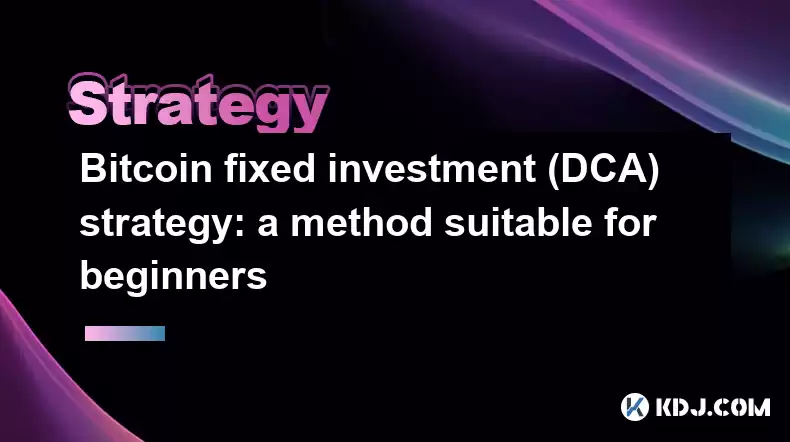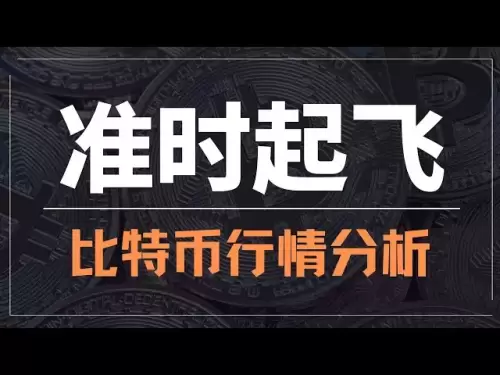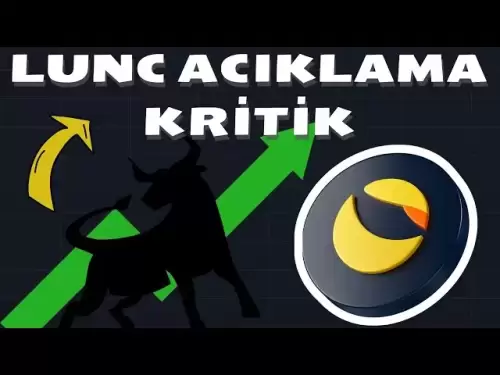-
 Bitcoin
Bitcoin $116400
0.87% -
 Ethereum
Ethereum $3819
3.86% -
 XRP
XRP $3.048
1.62% -
 Tether USDt
Tether USDt $1.000
0.03% -
 BNB
BNB $777.2
0.60% -
 Solana
Solana $169.3
0.46% -
 USDC
USDC $0.0000
0.02% -
 TRON
TRON $0.3414
2.06% -
 Dogecoin
Dogecoin $0.2126
3.33% -
 Cardano
Cardano $0.7527
1.21% -
 Hyperliquid
Hyperliquid $38.86
1.02% -
 Sui
Sui $3.683
5.27% -
 Stellar
Stellar $0.4048
1.45% -
 Chainlink
Chainlink $17.91
6.62% -
 Bitcoin Cash
Bitcoin Cash $576.9
1.29% -
 Hedera
Hedera $0.2487
1.03% -
 Ethena USDe
Ethena USDe $1.001
-0.01% -
 Avalanche
Avalanche $22.46
1.07% -
 Litecoin
Litecoin $120.8
1.69% -
 UNUS SED LEO
UNUS SED LEO $8.963
-0.30% -
 Toncoin
Toncoin $3.301
2.33% -
 Shiba Inu
Shiba Inu $0.00001250
1.13% -
 Uniswap
Uniswap $10.06
3.45% -
 Polkadot
Polkadot $3.731
1.56% -
 Dai
Dai $1.000
0.01% -
 Bitget Token
Bitget Token $4.416
1.58% -
 Cronos
Cronos $0.1482
3.73% -
 Monero
Monero $250.0
-12.34% -
 Pepe
Pepe $0.00001075
2.16% -
 Aave
Aave $274.6
4.17%
Bitcoin fixed investment (DCA) strategy: a method suitable for beginners
DCA strategy for Bitcoin involves regular fixed investments to mitigate volatility, reduce emotional decisions, and potentially lower average costs over time.
Apr 10, 2025 at 01:22 pm

Bitcoin fixed investment, often referred to as Dollar-Cost Averaging (DCA), is a popular investment strategy that can be particularly appealing to beginners in the cryptocurrency market. DCA involves investing a fixed amount of money into Bitcoin at regular intervals, regardless of the market's price fluctuations. This approach helps to mitigate the risk associated with the volatile nature of cryptocurrencies and can be a more disciplined and less stressful way to build a Bitcoin portfolio over time.
Understanding Dollar-Cost Averaging
At its core, DCA is a strategy designed to reduce the impact of volatility by spreading out the purchase of Bitcoin over time. Instead of investing a lump sum at a single point, which could be risky if the market subsequently drops, investors using DCA buy smaller amounts consistently. This means that when the price of Bitcoin is high, the fixed investment buys fewer coins, and when the price is low, it buys more. Over time, this can result in a lower average cost per Bitcoin than trying to time the market.
Benefits of DCA for Bitcoin Investment
One of the primary benefits of using DCA for Bitcoin investment is the reduction of emotional decision-making. The cryptocurrency market can be highly volatile, and it's easy for investors to make impulsive decisions based on short-term market movements. By committing to a regular investment schedule, investors can avoid the pitfalls of trying to time the market and instead focus on long-term growth.
Another advantage is the potential for lower average costs. Since DCA involves buying Bitcoin at various price points, it can help smooth out the highs and lows of the market. This can lead to a more favorable average purchase price over time, which can be particularly beneficial in a market as unpredictable as Bitcoin.
How to Implement a DCA Strategy for Bitcoin
Implementing a DCA strategy for Bitcoin is straightforward and can be done using various platforms. Here’s how you can get started:
- Choose a reliable cryptocurrency exchange: Select an exchange that supports regular investments and has a good reputation for security and user experience. Examples include Coinbase, Binance, and Kraken.
- Set up a recurring investment plan: Most exchanges allow you to set up automatic recurring purchases. Decide on the amount you want to invest and the frequency (e.g., weekly, bi-weekly, or monthly).
- Fund your account: Ensure that your exchange account is funded with enough money to cover your recurring investments. You can usually link a bank account or use a credit/debit card for this purpose.
- Monitor and adjust: While DCA is a set-and-forget strategy, it’s still important to periodically review your investments and adjust your strategy if necessary. This might include changing the investment amount or frequency based on your financial situation or market conditions.
Risks and Considerations
While DCA can be an effective strategy, it’s important to be aware of the potential risks and considerations. One risk is that DCA might not be the most efficient strategy if the market is consistently rising. In such a scenario, investing a lump sum at the beginning could yield better returns. However, predicting market trends is notoriously difficult, which is why DCA remains a popular choice for many.
Another consideration is the cost of transactions. Each purchase of Bitcoin through an exchange may incur fees, which can add up over time. It’s important to choose an exchange with competitive fee structures to minimize these costs.
DCA vs. Lump Sum Investing
When comparing DCA to lump sum investing, it’s important to understand the key differences. Lump sum investing involves investing a large amount of money all at once, which can be more risky but also potentially more rewarding if the market rises shortly after the investment. DCA, on the other hand, spreads out the investment over time, reducing the risk of investing at a peak price.
For beginners, DCA is often recommended because it’s less intimidating and helps to build a habit of regular investing. It also aligns well with the principle of investing money that you can afford to lose, as it allows for smaller, more manageable investments over time.
Practical Example of DCA in Action
To illustrate how DCA works in practice, consider the following example. Suppose you decide to invest $100 in Bitcoin every month. Here’s how it might look over a six-month period:
- Month 1: Bitcoin price is $30,000. You buy 0.0033 BTC.
- Month 2: Bitcoin price is $35,000. You buy 0.0029 BTC.
- Month 3: Bitcoin price is $28,000. You buy 0.0036 BTC.
- Month 4: Bitcoin price is $32,000. You buy 0.0031 BTC.
- Month 5: Bitcoin price is $25,000. You buy 0.0040 BTC.
- Month 6: Bitcoin price is $33,000. You buy 0.0030 BTC.
Over these six months, you’ve invested a total of $600 and acquired 0.0199 BTC. The average price per Bitcoin you paid is approximately $30,150, which is lower than the highest price you encountered during this period.
Choosing the Right Amount and Frequency
Deciding on the right amount and frequency for your DCA strategy depends on your financial situation and investment goals. A common approach is to invest a percentage of your income, such as 5% or 10%, which can help ensure that you’re not overcommitting financially. As for frequency, weekly or monthly investments are popular choices, as they strike a balance between regular investment and manageable transaction costs.
Tools and Resources for DCA
There are several tools and resources available to help you implement and track your DCA strategy. Automated investment platforms like Coinbase’s recurring buys can simplify the process by automatically executing your investments on schedule. Additionally, there are apps and websites designed to help you track your investments and calculate your average cost over time.
Frequently Asked Questions
Q: Can I use DCA for other cryptocurrencies besides Bitcoin?
A: Yes, DCA can be applied to any cryptocurrency. The principles remain the same: invest a fixed amount at regular intervals to mitigate the impact of volatility. However, it’s important to research and understand the specific risks associated with each cryptocurrency before investing.
Q: How long should I continue with a DCA strategy?
A: The duration of your DCA strategy depends on your investment goals. Some investors continue DCA indefinitely as part of a long-term investment plan, while others may switch to other strategies once they’ve accumulated a certain amount of cryptocurrency. It’s important to periodically review your strategy and adjust as needed.
Q: Is DCA suitable for experienced investors as well?
A: Yes, DCA can be beneficial for investors of all experience levels. Even experienced investors can use DCA to manage risk and build their portfolios over time. However, they may also combine DCA with other strategies, such as lump sum investing or trading, to diversify their approach.
Q: What should I do if the price of Bitcoin drops significantly after starting my DCA plan?
A: If the price of Bitcoin drops significantly, it’s important to stay disciplined and continue with your DCA plan. The strategy is designed to take advantage of such dips by buying more Bitcoin at lower prices. However, if the drop is part of a broader market trend that concerns you, it might be worth reviewing your overall investment strategy and possibly adjusting your investment amount or frequency.
Disclaimer:info@kdj.com
The information provided is not trading advice. kdj.com does not assume any responsibility for any investments made based on the information provided in this article. Cryptocurrencies are highly volatile and it is highly recommended that you invest with caution after thorough research!
If you believe that the content used on this website infringes your copyright, please contact us immediately (info@kdj.com) and we will delete it promptly.
- Pi Coin's dApp and AI Potential: Building a Decentralized Future
- 2025-08-08 02:30:12
- Bitcoin, Greenidge, and Liquidity: Navigating the Crypto Currents in NYC
- 2025-08-08 02:30:12
- Crypto Phishing Alert: $3 Million USDT Loss Highlights DeFi Risks
- 2025-08-08 01:10:12
- Crypto Presale Mania: Is Punisher Coin the High ROI King?
- 2025-08-08 01:10:12
- Online Betting, Platforms & Crypto Access: What's Hot in 2025
- 2025-08-08 00:50:12
- Layer Brett: The Meme Coin Primed for 100x Gains?
- 2025-08-08 01:50:12
Related knowledge

How to avoid common crypto investment mistakes?
Jul 13,2025 at 01:35am
Understanding the Risks of Crypto InvestmentInvesting in cryptocurrency can be highly rewarding, but it also comes with significant risks. One of the ...

What is a long-short crypto strategy?
Jul 15,2025 at 10:56am
Understanding the Basics of a Long-Short Crypto StrategyA long-short crypto strategy is an investment approach where traders simultaneously take long ...

What is a long-short crypto strategy?
Jul 11,2025 at 01:28pm
Understanding the Basics of Long-Short Crypto StrategyA long-short crypto strategy is an investment approach where traders take both long and short po...

How to use the RSI indicator for crypto?
Jul 12,2025 at 03:56pm
Understanding the RSI Indicator in Cryptocurrency TradingThe Relative Strength Index (RSI) is a momentum oscillator used to measure the speed and chan...

Is copy trading a good strategy for crypto beginners?
Jul 12,2025 at 08:28am
Understanding Copy Trading in the Cryptocurrency MarketCopy trading is a strategy where novice traders replicate the trades of experienced investors a...

How to build a crypto portfolio with $1000?
Jul 13,2025 at 08:14pm
Understanding the Basics of Cryptocurrency InvestmentBuilding a crypto portfolio with $1000 starts with understanding the fundamentals of cryptocurren...

How to avoid common crypto investment mistakes?
Jul 13,2025 at 01:35am
Understanding the Risks of Crypto InvestmentInvesting in cryptocurrency can be highly rewarding, but it also comes with significant risks. One of the ...

What is a long-short crypto strategy?
Jul 15,2025 at 10:56am
Understanding the Basics of a Long-Short Crypto StrategyA long-short crypto strategy is an investment approach where traders simultaneously take long ...

What is a long-short crypto strategy?
Jul 11,2025 at 01:28pm
Understanding the Basics of Long-Short Crypto StrategyA long-short crypto strategy is an investment approach where traders take both long and short po...

How to use the RSI indicator for crypto?
Jul 12,2025 at 03:56pm
Understanding the RSI Indicator in Cryptocurrency TradingThe Relative Strength Index (RSI) is a momentum oscillator used to measure the speed and chan...

Is copy trading a good strategy for crypto beginners?
Jul 12,2025 at 08:28am
Understanding Copy Trading in the Cryptocurrency MarketCopy trading is a strategy where novice traders replicate the trades of experienced investors a...

How to build a crypto portfolio with $1000?
Jul 13,2025 at 08:14pm
Understanding the Basics of Cryptocurrency InvestmentBuilding a crypto portfolio with $1000 starts with understanding the fundamentals of cryptocurren...
See all articles

























































































